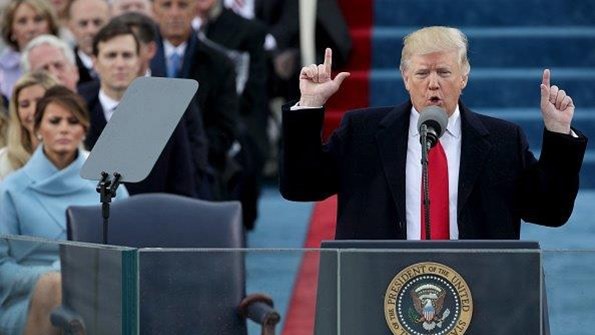The election of Donald Trump as the new President of the United States is, in the view of advocates and critics, a game-changer. Spanning reshoring manufacturing jobs, taxation and infrastructure investments, President Trump’s political economy connotes a significant paradigm shift that in almost in one stroke plans a return to the real economy engine, and break off the era of US as the consumer of last resort.
In this context the “Manufacturing Renaissance”, as it is dubbed, plays the pivot of the new Administration’s economic paradigm, and is not only a political catchphrase.
Due to the new technologies to extract low-cost natural gas, energy by itself hands a substantial advantage to manufacturing based in US. Natural gas prices, according to The Boston Consulting Group, are calculated to be 90% higher in the United Kingdom, 180% higher in France, 190% higher in Germany, and 240% higher in Japan, and the industrial electricity prices 150% higher in France, 180% higher in the United Kingdom, 100% higher in Germany, and 150% higher in Japan than in the United States.
In sum, total manufactured costs vis-à-vis US peers group including France, Germany and Japan are respectively higher by 15% to 21% , and productivity-adjusted wages for US based manufacturing about 33% lower than Japan and 25% lower than Germany.
An energy boom and cheaper energy costs, notably natural gas, have been the single major factor in shrinking the US trade deficit, from 5.6 percent of gross domestic product in 2006 to 3 percent in 2015.
On the side of labor costs, US wages compared with emerging market economies in Asia, a preferred foreign direct investment destination of US multinationals, low wages are no more a boon. Since 2001, hourly manufacturing wages in China have been rising by an average of 12% a year, so the China’s wage advantage actually is thinning to a less 10 percent.
A sensible motive for returning jobs on the American soil. It lies on the assumption that manufacturing has a high employment multiplier, a large amount of ancillary jobs generated in other fields. Projections based on Bureau of Economic Analysis (BEA) calculated that a dollar’s worth of final demand for manufacturers generates $1.48 in other services and production. In contrast the retail and wholesale trade sectors have much lower multipliers, generating 54 cents and 58 cents respectively in other additional inputs for every dollar of economic activity they generate (Stephen Gold, MAPI 2014).
There is also a further reason for the “Manufacturing Renaissance” to play high in the new Administration’s political agenda: fix the high-powered political issue of the US current account deficit, which though since 6.4 percent of GDP in 2005, 800 billion dollars or 1.8 percent of the world GDP, has declined to a safe 2.6 percent of current-dollar GDP, it’s is still a high-powered political issue.
As Ghosh and Ramakrishnan of IMF wrote: “When countries run large deficits, businesses, trade unions, and parliamentarians are often quick to point accusing fingers at trading partners and make charges about unfair practices”.
Aside from goods and services, the current account is also influenced by a nation’s excess of investment over saving. Since the 80ties US gross saving has fallen as a share of GDP. Households, rather than firms, and government seem to be co-responsible for this trend. Moreover, while the decline in saving may reflect the decline in inflation, low interest rates, budgetary policies have also fueled what might seems a structural shortage of domestic finance available for productive investment.
Tensions between the United States and China over which should be held responsible for trade imbalances have urged to consider the broader consequences for the international financial system when some countries run large and persistent current account deficits and others accumulate big surpluses.
If these actions tell a story, it is that the U.S. political leaders are making the most of the Great Financial Crisis. Rebalancing America’s growth engine on real economy, US stubborn current account imbalance will return on a healthier and stable path.
Yet, this uplifting story has downsides.
For one, getting rid of trade deficit could have upshots on inflation rates, and even a flight to the dollar. Patrick Artus of Natixis has elaborated on the idea often floated of eliminating US non-energy trade deficit by means of taxation imports does not make sense. Besides the inflationary effects that will arise from customs duties, shrinking imports from foreign producers generates negative spillovers in US domestic investment.
Additionally, an US current account’s shrinkage will also spread via financial spillovers to emerging markets. As Andrew Sheng put it “the time will come when the U.S. economy shrinks its current account deficit and decreases dollar liquidity, creating a debt-deflation trap for the emerging world.”
A shrinking US current account deficit, a rising dollar matched to a flight-to-quality, and especially a reduction of U.S. dollar exports due to the US energy independence reduce the supply of dollars in the global economy. A serious question arises over what factors are likely to cause the US to rebalance the global economy, especially for those countries that most rely on the US dollar.
A reduction in the supply of dollars and a stronger dollar value, which are legitimate outcomes of national policymakers, are set to trigger a credit crunch and increase expenses for developing dollar-dependent economies with trade currencies and foreign reserves denominated in US dollars.
Emerging economies, which are still the most dollar-dependent, are set to take the brunt, as they are mostly required to pay for trade transactions in US dollars.
The above question is not negligible, given that emerging and developing economies dependent on the dollar make up more than half of global GDP, a liquidity crisis could not only hit emerging and developing economies. If it were to materialize, it would clearly cause a global economic contraction.
The gloomy scenario is evidence that the current monetary system is fated to fall under the gyrations of the US economic and monetary policy once again. Capital flows are still driven by rising dollar as episodes appeared since the Fed’s tapering, 2013, and recently in the wake of Fed’s rate hike and Trump’s win. The global financial drive of the dollar generates more harm than benefits. Capital outflows from emerging economies and even from Europe will eventually push central banks to increase interest rates at the detriment of the global economy.
What is the way out? The classical Triffin solution assumes that fixing the problem with an alternative reserve currency is inherently impossible, as “my currency, your problem” will fatally resurface. The only solution for him is a kind of synthetic “global currency” resulting from a balanced basket of major currencies.
Still, fresh evolutionary dynamics and geo-economic forces, which were lacking in the Sixties, are now influencing the trajectories of the international liberal order that the US created after the Second-War. New reserve currencies, the euro and the renminbi , could sooner than later take a central role in the current monetary arrangements, and reshape them into a more diverse and stable global monetary governance.

BusinessEconomics
Trump’s ‘Manufacturing Renaissance’ And The New Liberal Order – Analysis
Miriam L. Campanella2 Maggio 20170
Share



















Lascia un commento